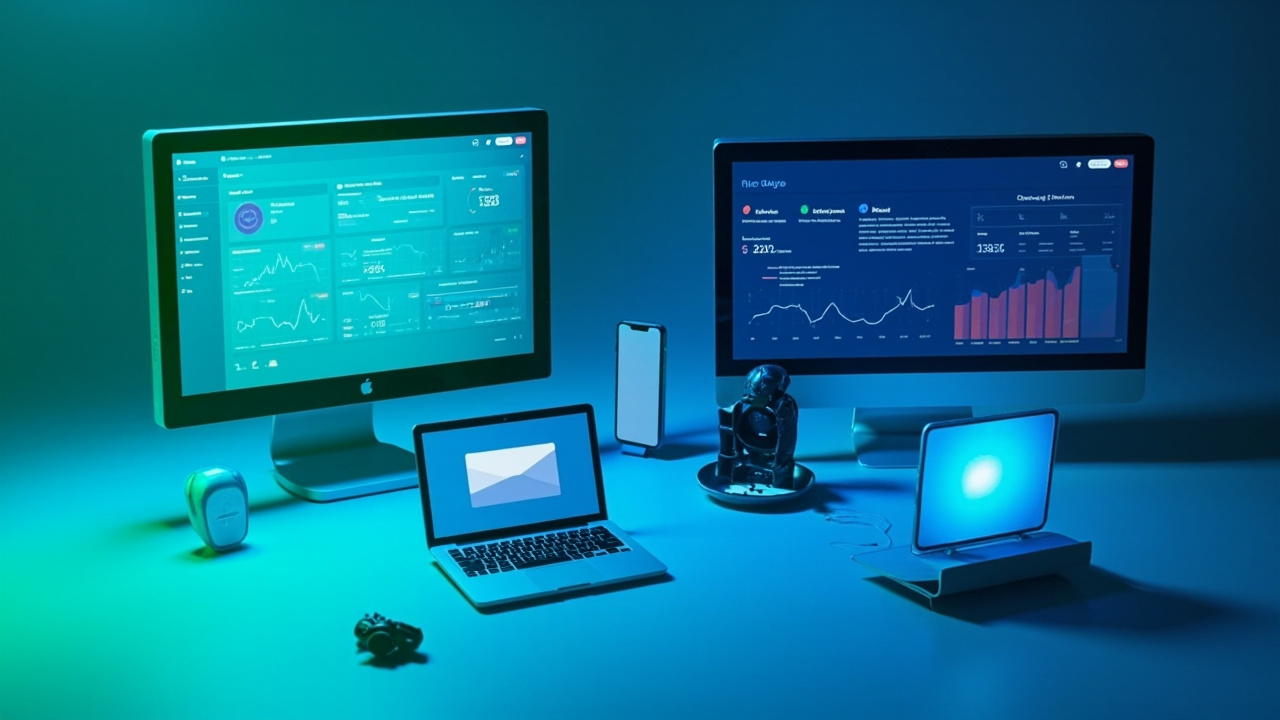In today’s rapidly evolving digital landscape, the world of software development is expanding at an unprecedented pace. With every new application, update, or feature, the stakes for ensuring high-quality software have never been higher. For developers and businesses alike, maintaining impeccable software standards is no longer just an option it’s a necessity. Yet, the traditional methods of software testing, with their manual processes and time-consuming nature, often struggle to keep up with the demands of modern development cycles.
Software testing has always been a critical component of the development process. It ensures that software not only meets its requirements but also exceeds user expectations. However, as software systems become increasingly complex and interconnected, traditional testing approaches are often inadequate for addressing the intricate challenges they pose. The need for faster, more efficient, and accurate testing methods has given rise to innovative solutions that promise to revolutionize the way we approach software quality assurance.
In this comprehensive exploration of software testing, we’ll delve into the various challenges faced by traditional testing methods, examine cutting-edge innovations and tools, and highlight how these advancements are reshaping the industry. Whether you’re a seasoned developer, a quality assurance specialist, or someone simply interested in the field, this article will provide valuable insights into the future of software testing and the tools that are leading the charge.
Understanding the Fundamentals of Software Testing

Before diving into the innovations transforming software testing, it’s essential to establish a foundational understanding of what software testing entails. This section will cover the basics, from definitions to methodologies, providing a comprehensive overview of the testing landscape.
The Core Purpose of Software Testing
Software testing is an essential phase in the software development lifecycle. Its primary purpose is to verify that a software application performs its intended functions correctly and efficiently. Testing aims to identify defects and ensure that the software meets the specified requirements.
“Testing is the process of executing a program with the aim of finding errors.” – Glenford Myers
Critical to this process is the concept of verification and validation. Verification ensures that the software accurately implements the specified requirements, while validation checks if the software meets the user’s needs and expectations. Both aspects are vital to delivering high-quality software.
Key Testing Methodologies
Software testing methodologies can be broadly categorized into two types: manual testing and automated testing. Manual testing involves human testers executing test cases without the aid of automation tools. This approach allows for nuanced human judgment but is often time-consuming and prone to human error.
Automated testing, on the other hand, utilizes tools and scripts to execute test cases, offering faster feedback and reducing the likelihood of human error. Automation is especially beneficial for repetitive tasks, enabling testers to focus on more complex scenarios.
The Challenges of Traditional Testing
Despite its importance, traditional software testing faces several challenges. Manual testing can be labor-intensive, slow, and costly. Additionally, maintaining test scripts in automated testing can become cumbersome, especially when software updates alter user interfaces or functionalities.
As we transition to more agile and continuous deployment environments, these challenges necessitate a shift towards more innovative testing solutions that offer efficiency, accuracy, and scalability.
The Rise of Automated Testing: Efficiency and Accuracy

With the rapid pace of development and deployment cycles, automated testing has emerged as a vital solution to the limitations of manual testing. This section will explore the benefits and challenges of automated testing while highlighting how it is transforming the industry.
Benefits of Automated Testing
Automated testing offers numerous advantages over traditional manual testing. One of the most significant benefits is the speed at which tests can be executed. Automated tests can run quickly and repeatedly, providing immediate feedback to developers and allowing for rapid iteration.
Additionally, automated testing improves accuracy by minimizing human error. Once test scripts are created, they can be executed consistently, ensuring that tests are performed the same way each time.
“Automation is not a choice; it is a necessity in the fast-paced world of software development.”
Automated tests can also be run at any time, enabling continuous integration and continuous delivery (CI/CD) practices. This integration enhances software quality by allowing for more frequent testing and quicker identification of defects.
Overcoming Automated Testing Challenges
Despite its benefits, automated testing is not without its challenges. Creating and maintaining test scripts requires an initial investment of time and resources. Additionally, test scripts can become brittle and require frequent updates, especially when software changes impact the user interface.
This is where innovative solutions, such as GenQE, come into play. By leveraging AI and machine learning, GenQE automates the creation of test cases, reducing the need for extensive manual scripting and ensuring test scripts can adapt to changes in the software environment.
Case Study: Efficiency Gains with Automated Testing
Consider a large e-commerce platform that adopted automated testing to streamline its release cycles. By implementing automated tests for its checkout process, the platform reduced the time required for regression testing from days to mere hours. This efficiency allowed for more frequent updates and improvements, ultimately leading to increased customer satisfaction.
Innovations in Software Testing: AI and Machine Learning

As software systems grow more complex, the integration of AI and machine learning into testing processes has become increasingly important. This section will explore how these technologies are revolutionizing software testing, offering enhanced capabilities and new possibilities.
The Role of AI in Testing
Artificial Intelligence (AI) is transforming the landscape of software testing by enabling intelligent test automation. AI-driven tools can analyze vast amounts of data to generate test cases, predict potential defects, and prioritize critical testing areas.
One such tool is GenQE, which uses AI to optimize test automation. By analyzing software requirements, user behavior, and historical data, GenQE automatically generates test cases, improving coverage and efficiency without extensive manual input.
“AI is not just a tool; it’s a partner in achieving software quality excellence.”
AI also enables smarter test execution. By prioritizing test cases based on risk analysis, AI-driven tools ensure that critical areas are tested first, allowing teams to focus their efforts where they matter most.
Machine Learning for Defect Detection
Machine learning, a subset of AI, further enhances software testing by enabling advanced defect detection. By identifying patterns in test results, machine learning algorithms can detect anomalies and potential defects early in the development cycle. This proactive approach prevents critical issues from reaching production, saving both time and resources.
GenQE, for instance, leverages machine learning to identify defects more accurately and efficiently. This capability not only improves software quality but also reduces the time and cost associated with defect resolution.
Practical Applications of AI and Machine Learning
AI and machine learning are being applied in various testing scenarios, from user interface testing to performance testing. By using AI-driven tools, organizations can achieve faster time to market, higher accuracy, and reduced costs.
For example, a financial services company implemented AI-driven testing to enhance the reliability of its trading platform. By automating test case generation and execution, the company achieved a 30% reduction in testing time and a 20% decrease in post-release defects.
Enhancing Test Coverage Across Platforms

With the proliferation of platforms and devices, ensuring comprehensive test coverage has become a critical aspect of software testing. This section will examine the importance of test coverage and how innovative tools are addressing the challenges of testing across diverse environments.
The Importance of Comprehensive Test Coverage
Comprehensive test coverage ensures that software applications function seamlessly across different platforms, devices, and operating systems. With the increasing diversity of user environments, achieving robust test coverage is essential to delivering a consistent user experience.
“In the world of software, test coverage is the key to user satisfaction.”
Poor test coverage can lead to undetected defects, resulting in negative user experiences and potential reputational damage. Therefore, achieving comprehensive coverage is a priority for development teams.
Overcoming Cross-Platform Testing Challenges
Cross-platform testing presents unique challenges, as different platforms may have varying requirements and constraints. Ensuring compatibility across web, mobile, APIs, and cloud environments requires specialized testing approaches.
Innovative tools like GenQE address these challenges by providing extensive test coverage across various platforms. By automating test case generation and execution, GenQE ensures that applications are thoroughly tested in diverse environments, reducing the risk of platform-specific defects.
Real-World Example: Cross-Platform Testing
Consider a popular social media app that needed to ensure consistent functionality across iOS, Android, and web platforms. By implementing automated cross-platform testing, the app’s development team identified and resolved platform-specific issues before release, enhancing user satisfaction and engagement.
The Integration of Testing with DevOps and CI/CD

The integration of testing with DevOps and CI/CD practices is essential for achieving continuous quality assurance. This section will explore how testing is integrated into modern development workflows, enabling faster and more reliable software delivery.
The Role of Testing in DevOps
DevOps emphasizes collaboration between development and operations teams, aiming to deliver software more efficiently and reliably. Testing plays a pivotal role in this process, ensuring that quality is maintained throughout the development lifecycle.
By integrating testing into the DevOps pipeline, organizations can achieve continuous testing, which allows for frequent and automatic execution of tests. This integration enables faster feedback, quicker identification of defects, and more rapid iteration.
“In DevOps, testing is not a phase; it’s a continuous process that ensures software quality.”
CI/CD and Automated Testing
Continuous Integration (CI) and Continuous Delivery (CD) are practices that automate the integration and deployment of code changes. Automated testing is a critical component of CI/CD, as it ensures that code changes do not introduce defects.
Innovative tools like GenQE seamlessly integrate with CI/CD pipelines, enabling automated testing to become an integral part of the development process. By providing smooth integration with tools like Jenkins, GitHub Actions, and Azure DevOps, GenQE facilitates continuous quality assurance.
Case Study: CI/CD Integration
A technology company implemented CI/CD practices to enhance its software delivery process. By integrating automated testing into its CI/CD pipeline, the company reduced deployment times by 40% and improved software quality, resulting in higher customer satisfaction.
Advanced Analytics and Reporting in Software Testing

Advanced analytics and reporting capabilities are transforming the way organizations approach software testing. This section will explore how data-driven insights are enhancing testing processes and decision-making.
The Power of Data-Driven Testing
Data-driven testing leverages analytics to provide valuable insights into software quality trends and testing effectiveness. By analyzing test results, organizations can identify patterns, optimize testing strategies, and make informed decisions.
“Data-driven insights are the key to unlocking the full potential of software testing.”
Advanced analytics tools provide detailed dashboards and reports, allowing teams to track testing progress, identify bottlenecks, and measure the impact of testing efforts on software quality.
Enhancing Decision-Making with Analytics
Analytics enable organizations to prioritize testing efforts based on risk and impact. By identifying high-impact defects and areas of concern, teams can focus their resources where they are needed most.
Tools like GenQE offer advanced analytics and reporting features, providing AI-driven recommendations to enhance testing strategies. These insights empower teams to optimize their testing efforts and improve overall software quality.
Practical Applications of Analytics
Consider a healthcare software provider that used advanced analytics to optimize its testing processes. By analyzing test data, the provider identified critical defects early, reducing the risk of errors in its software and improving patient safety.
Conclusion: Embracing the Future of Software Testing

As software applications continue to grow in complexity, the need for innovative testing solutions is more pressing than ever. The integration of AI and machine learning, coupled with comprehensive test coverage and seamless DevOps integration, is transforming the software testing landscape.
For organizations seeking to enhance software quality, reduce costs, and accelerate development cycles, embracing these innovations is essential. Tools like GenQE offer a glimpse into the future of software testing, providing AI-powered, scalable, and intelligent solutions that make testing faster, smarter, and more reliable.
In conclusion, the future of software testing is bright, driven by innovation and technology. By embracing these advancements, organizations can ensure that they remain at the forefront of software quality assurance, delivering exceptional products that meet and exceed user expectations.
“The future of software testing is not just about finding defects; it’s about preventing them.”
As you reflect on the insights shared in this article, consider exploring the tools and approaches discussed to enhance your software testing processes. Embrace the future of testing, and unlock the full potential of your software development efforts.
Discover More Innovative Solutions
Want to learn more about the tools and technologies discussed in this article? Explore how these innovations can be tailored to your specific needs and workflow requirements.
Our team of experts is available to answer your questions and provide personalized insights into how modern solutions like GenQE can address your specific challenges.
If the link above does not work, please visit: https://calendly.com/dm-csimplifyit/30min?month=2025-05